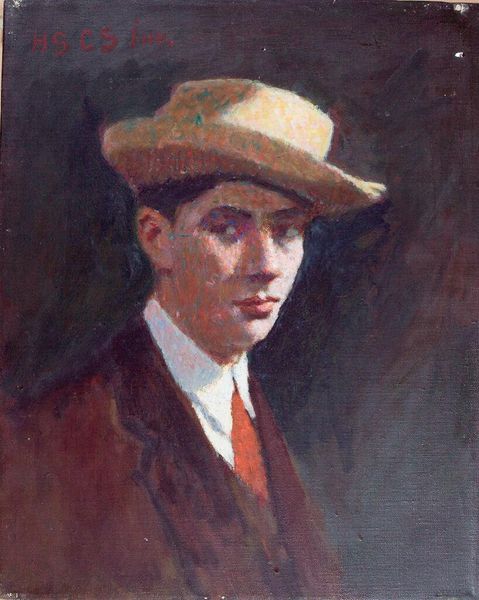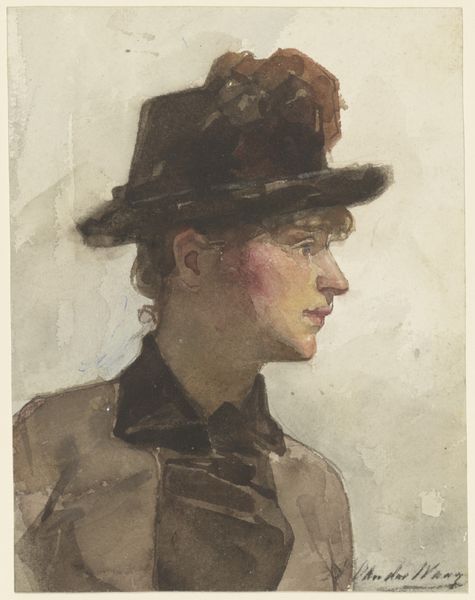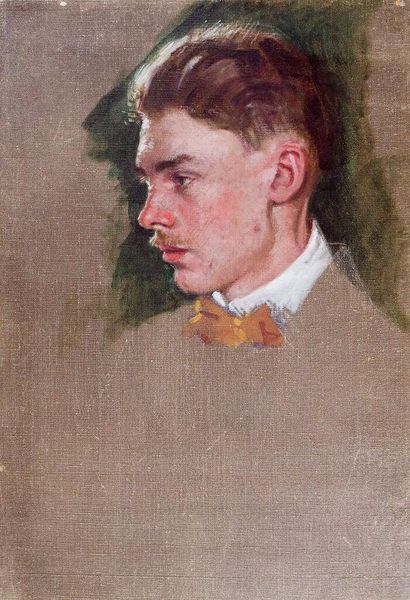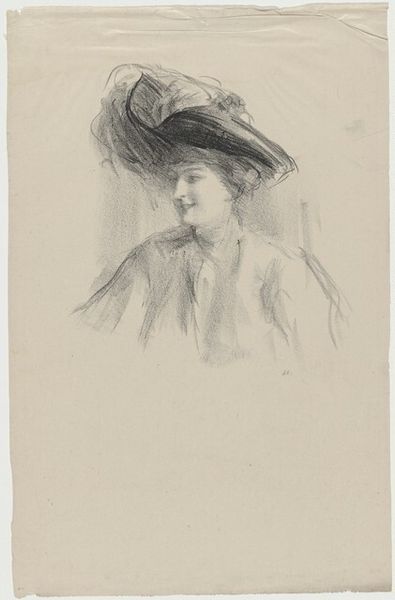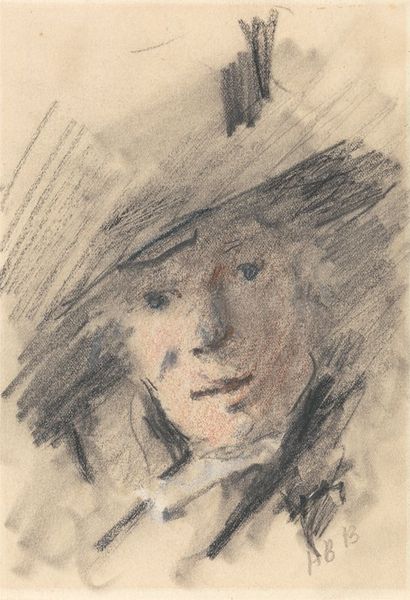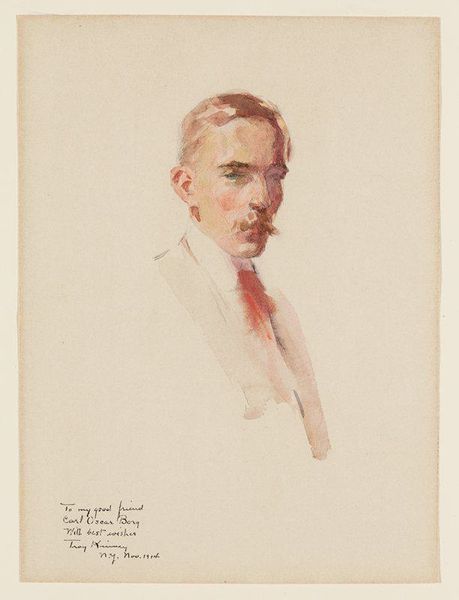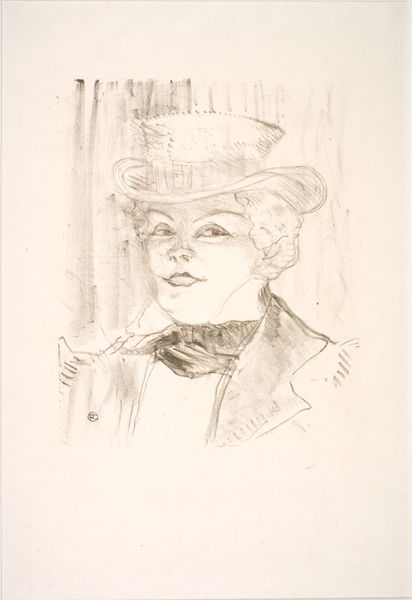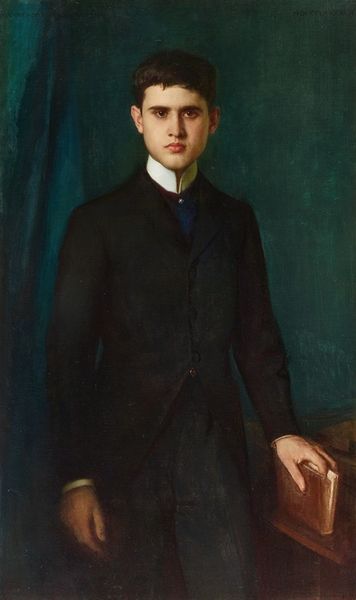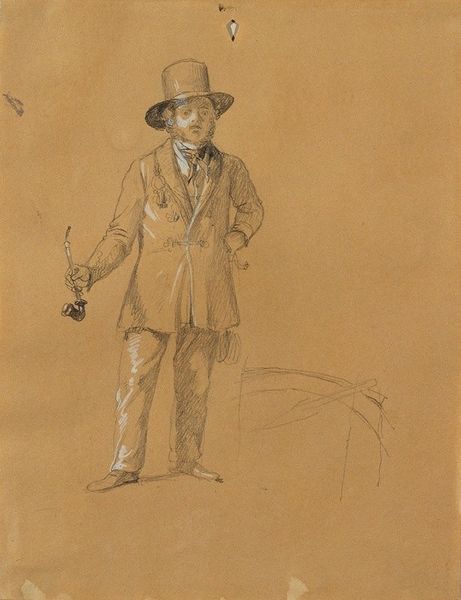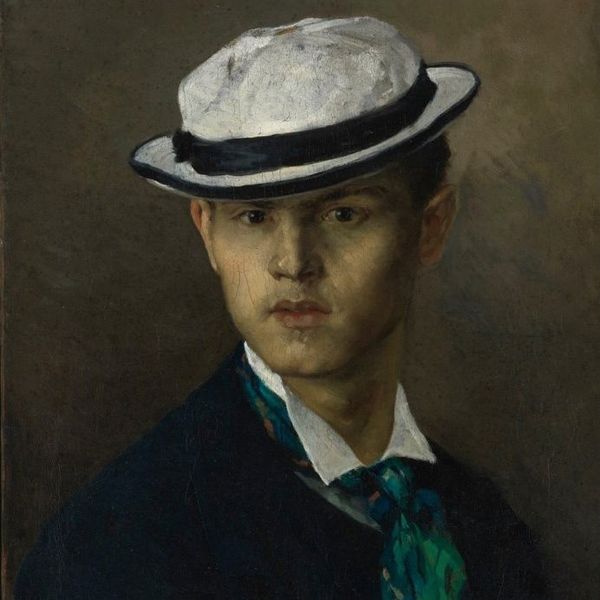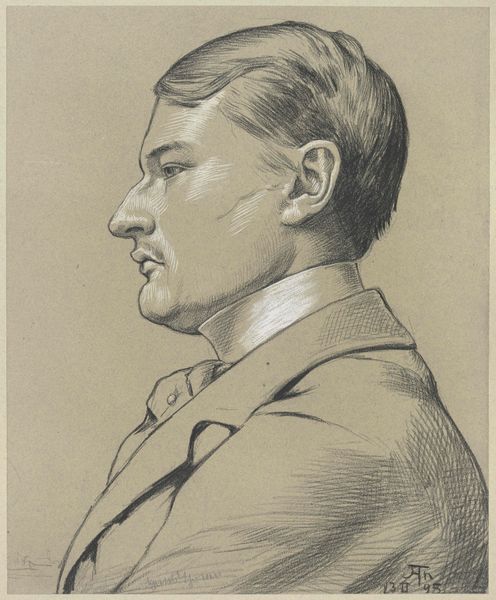
Copyright: Public Domain: Artvee
Editor: So this is a drawing of George Michael Cohan by Harrison Fisher, created in 1916, using pencil. It's a portrait, very formal and serious, capturing him in a suit and hat. What do you see in this piece? Curator: Beyond just a portrait, I see a careful negotiation of identity, power, and representation. It's a portrait of a man who performed on stage, but more importantly, during a period of immense social change in America, particularly regarding immigration and the rise of celebrity culture. Fisher, known for idealizing the “American Girl,” is portraying Cohan. What does it mean to depict this figure, during that time, in such a…polished way? Editor: That’s an interesting point. I hadn't considered it in terms of social change, or Fisher's reputation with female figures. Curator: Think about Cohan's performances and the narratives they promoted; the performative construction of patriotism and what it meant to be "American" at the time. Fisher, through his medium, through this gaze, perhaps affirms or even interrogates Cohan’s persona. Could this be a commentary on the creation of celebrity? Is it simply documentation or a contribution to the myth? Editor: So you're saying the drawing could be as much about constructing an image as it is about capturing a likeness? Curator: Exactly. The ‘American’ identity was – and is – an ongoing process of construction and negotiation, through media such as this. A portrait isn't neutral; it's always saying something. Editor: I guess I usually just see "art" and not all of the layers of meaning. This gives me a lot to think about! Curator: It's all connected, isn't it? Art, identity, and the world around us. Thinking about these portraits as performances is key.
Comments
No comments
Be the first to comment and join the conversation on the ultimate creative platform.
